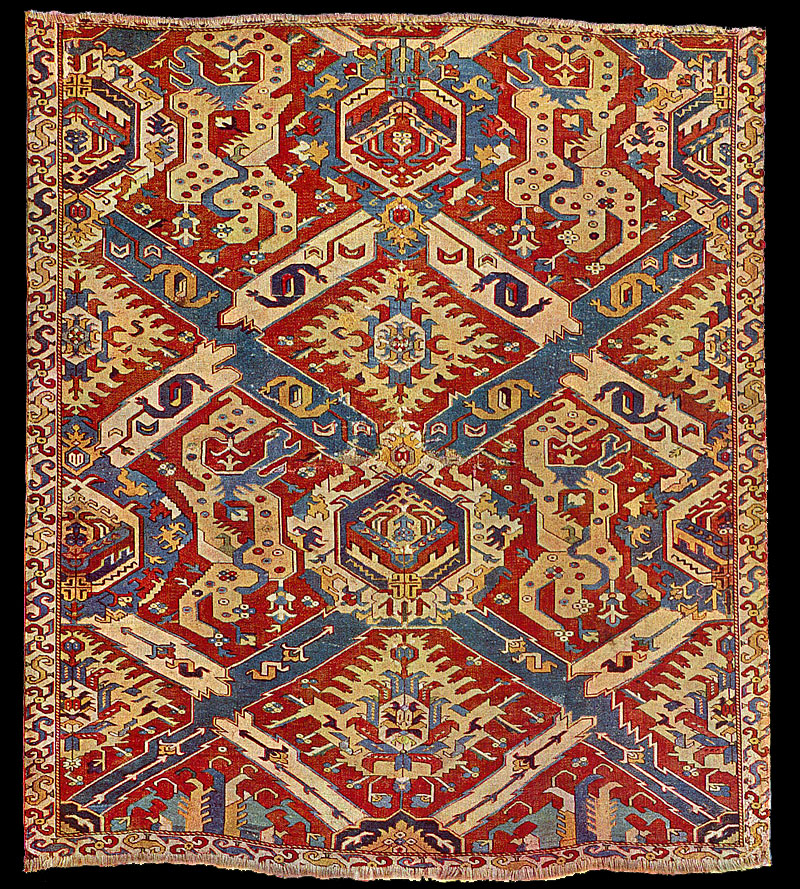|
Victoria and
Albert Museum Early Dragon rug, 18th cenury, Safavid Period, possibly
Karabagh, Territory of
Gendje /Ganja Beylerbeyi (Province)
|
|
Victoria and Albert Museum, No. 171. Acquired in 1909. 6 feet 11 inches x
6feet (2.11m x 1.83m). 17th century
Warp - Two-ply white wool; 16 to one inch; on two levels not much separated.
Weft - Red wool; two shoots after each row of knots.
Knots - Wool; Ghiordes type; 12 to one inch; 100 to the square inch.
Colours - 8: Red (field); medium blue; white (first border); yellow; light
blue; dark blue; brown-black; purple.
The pattern of this carpet appears to be a development of
the earlier Dragon carpets.
The long leaves have almost lost their serrations and have become bar-like
appendages of the palmettes; and the spotted dragons are so debased as to be
unrecognisable without the help of more primitive forms of the motive. The
border with two varieties of S-forms is one found also in many Turkish
prayer rugs.
It is not difficult to trace in this carpet earlier forms of the large rayed
figures and very angular floral motives so common in Kazak and other
Caucasian carpets of a later date.
In the Kaiser-Friedrich Museum, Berlin, there is a carpet resembling both
this one and the other V&A Dragon
rug; its border is almost identical with the border of the latter.
(Vienna Book, Plate 36.)
 |

